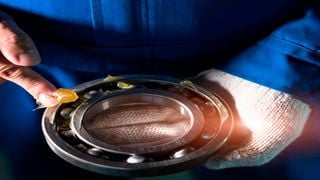
A mechanic putting yellow grease into a bearing.
| ShutterstockDN2
Premium
What a lube service sometimes overlooks
What you need to know:
- Service mechanics should at least be observant and aware of all the other lubrication items as they move around the car.
- “Being aware and taking notice” are the only skills required.
When garages do a “lube” service, it seems they change the oil and oil filter and squirt some grease wherever there is a nipple. Is that the only lubrication that needs to be done at service intervals? Or what more should they do, but perhaps often don’t? - Maria H.
Every single component of a car where two surfaces of bare metal rub against each other needs to be lubricated. They don’t all need attention at every service, but they should all be regularly checked – and specific attention given where a need is found.
The two most important, because neglect can lead to a breakdown and considerable expense, are the gearbox and differential. Their oil levels and condition should be physically checked at every service, and either confirmed by a job-sheet tick or topped up or renewed.

Underneath a truck as seen from a vehicle inspection trench.
The reason for any shortfall should be investigated and if fault is found, it should be fixed (the same applies to brake, clutch and power steering fluids and the radiator coolant).
Also read: How all-electric cars work
As frequently, but less crucially, service mechanics should at least be observant and aware of all the other lubrication items as they move around the car – door hinges, locks and latches, window winders, seat adjustment rails, pedal and handbrake cables, throttle linkages, ball joints, grease boots, steering linkages, wiper pivots, bonnet latches, handbrake levers, and anything with a bearing in it (even a sealed bearing). What they should be looking for is any sign of looseness, wear from rough rubbing, corrosion, stiffness in operation, squeaks and rattles, leaks, and any residual grease that is too dry or too dirty, and so on.
Owners should be alert to those things, too.
“Being aware and taking notice” are the only skills required; no tools or dismantling or plug opening is necessary unless and until fault is found. And if fault is spotted before severe damage is done, the remedy is usually very simple: fresh lubrication. A squirt of WD40 down a keyhole; a few drops of oil on a cable guide; a little smear of grease on a latch; boiling water to remove any fur of battery acid on the terminals or cradle bracket, followed by a smear of petroleum jelly to stop the problem recurring. Stuff like that, and almost always in very small quantities, because slippery stuff is also sticky stuff and can be a dirt trap.
At service, an expert should check them all. Between services, by simply being aware, the owner can spot-check some of them every time the car is used.





